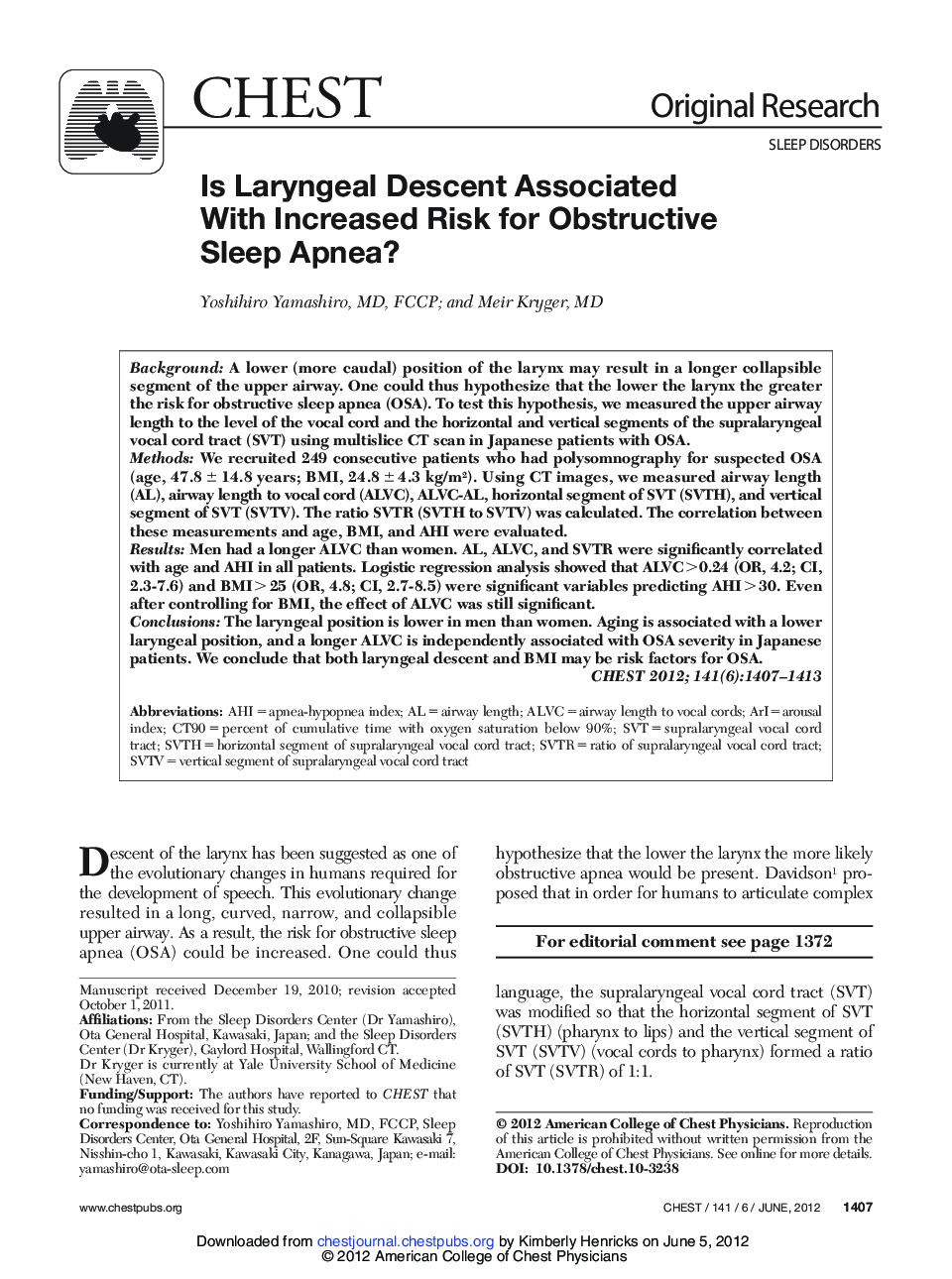| Article ID | Journal | Published Year | Pages | File Type |
|---|---|---|---|---|
| 2900502 | Chest | 2012 | 7 Pages |
BackgroundA lower (more caudal) position of the larynx may result in a longer collapsible segment of the upper airway. One could thus hypothesize that the lower the larynx the greater the risk for obstructive sleep apnea (OSA). To test this hypothesis, we measured the upper airway length to the level of the vocal cord and the horizontal and vertical segments of the supralaryngeal vocal cord tract (SVT) using multislice CT scan in Japanese patients with OSA.MethodsWe recruited 249 consecutive patients who had polysomnography for suspected OSA (age, 47.8 ± 14.8 years; BMI, 24.8 ± 4.3 kg/m2). Using CT images, we measured airway length (AL), airway length to vocal cord (ALVC), ALVC-AL, horizontal segment of SVT (SVTH), and vertical segment of SVT (SVTV). The ratio SVTR (SVTH to SVTV) was calculated. The correlation between these measurements and age, BMI, and AHI were evaluated.ResultsMen had a longer ALVC than women. AL, ALVC, and SVTR were significantly correlated with age and AHI in all patients. Logistic regression analysis showed that ALVC > 0.24 (OR, 4.2; CI, 2.3-7.6) and BMI > 25 (OR, 4.8; CI, 2.7-8.5) were significant variables predicting AHI > 30. Even after controlling for BMI, the effect of ALVC was still significant.ConclusionsThe laryngeal position is lower in men than women. Aging is associated with a lower laryngeal position, and a longer ALVC is independently associated with OSA severity in Japanese patients. We conclude that both laryngeal descent and BMI may be risk factors for OSA.
